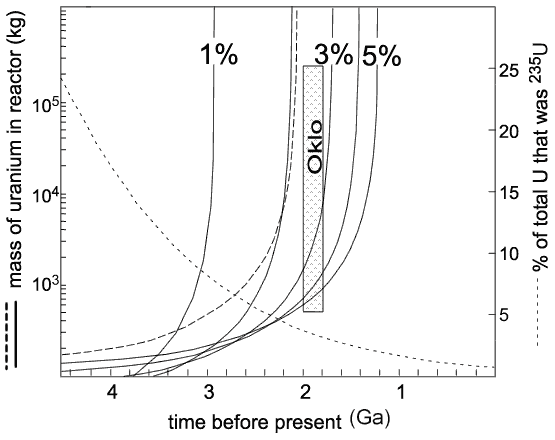
Figure 5.
The critical mass of uranium needed to produce a natural fission reactor has changed over Earth’s history because the proportion of uranium that is fissile 235U has decreased dramatically. This is shown by the right-hand axis, and exponentially decaying thin dashed line, that illustrate the relative proportion of U that was fissogenic 235U as a function of time. The mass of U required for a natural reactor to go critical is shown as a function of age for different concentrations of uraninite in the reactor core (1–5 modal percentage shown with solid lines) assuming a reactor comprised of quartz, uraninite, and water. The thick dashed line shows the increase in the mass of U required at any given time due to adding 10% ilmenite to the most uraninite-rich reactor core (5%) because the Fe and Ti act as neutron poisons. Although the exact mass of uranium required for a natural fission reactor depends on poorly constrained compositional and geometric factors, it is clear that the mass of uranium required during much of the Archean was very small (<1000 kg, or ~0.1 m3) and then increased nearly exponentially as the abundance of 235U decreased at some time around the Archean-Proterozoic boundary. Comparison of the calculated mass of uranium required with the mass observed in the Oklo reactors provides some ground-truth to the models. Input parameters for the calculations were ε = 1.004 following Adam (2007) (the exact value plays a secondary role in the calculations); for r, we used the relationship between uranium concentration and resonance escape probability derived by Adam (2007; his Fig. 2); see text for further details.